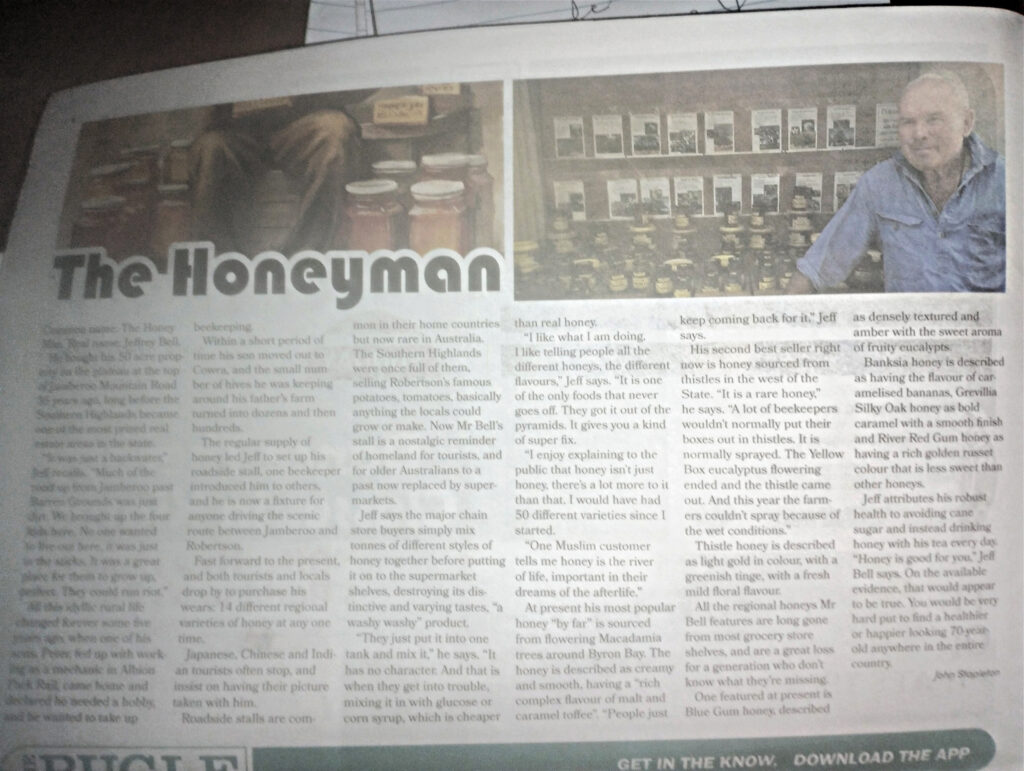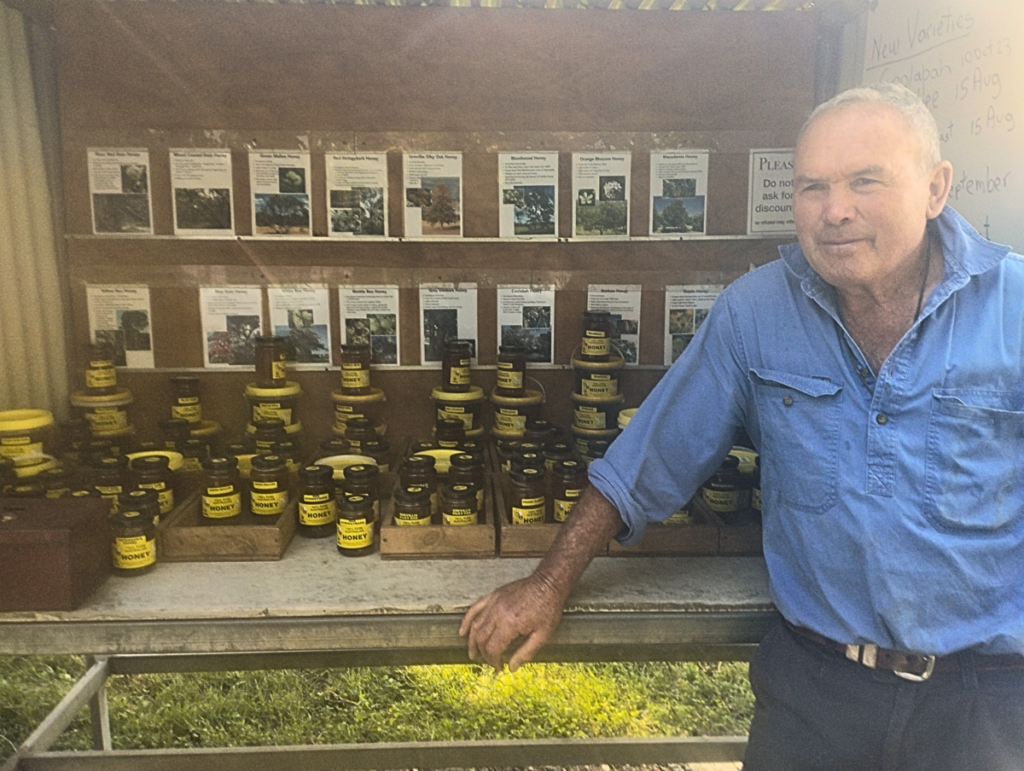The Kiama Bugle, 23 March, 2024.
Common name: The Honey Man. Real Name: Jeffrey Bell.
He bought his 50 acre property on the plateau at the top of Jamberoo Mountain Road 35 years ago, long before the Southern Highlands became one of the most prized real estate areas in the state.
“It was just a backwater,” Jeff recalls. “Much of the road up from Jamberoo past Barren Grounds was just dirt. We brought up the four kids here. No one wanted to live out here, it was just in the sticks. It was a great place for them to grow up, perfect. They could run riot.”
All this idyllic rural life changed forever some five years ago, when one of his sons, Peter, fed up with working as a mechanic in Albion Park Rail, came home and declared he needed a hobby, and he wanted to take up beekeeping.
Within a short period of time his son moved out to Cowra, and the small number of hives he was keeping around his father’s farm turned into dozens and then hundreds.
The regular supply of honey led Jeff to set up his roadside stall, one beekeeper introduced him to others, and he is now a fixture for anyone driving the scenic route between Jamberoo and Robertson.
Fast forward to the present, and both tourists and locals drop by to purchase his wears: 14 different regional varieties of honey at any one time.
Japanese, Chinese and Indian tourists often stop, and insist on having their picture taken with him.
Roadside stalls are common in their home countries but now rare in Australia. The southern highlands were once full of them, selling Robertson’s famous potatoes, tomatoes, basically anything the locals could grow or make. Now Mr Bell’s stall is a nostalgic reminder of homeland for tourists, and for older Australians to a past now replaced by supermarkets.
Jeff says the major chain store buyers simply mix tonnes of different styles of honey together before putting it on to the supermarket shelves, destroying its distinctive and varying tastes, “a washy washy” product.
“They just put it into one tank and mix it,” he says. “It has no character. And that is when they get into trouble, mixing it in with glucose or corn syrup, which is cheaper than real honey.
“I like what I am doing, I like telling people all the different honeys, the different flavours,” Jeff says. “It is one of the only foods that never goes off. They got it out of the pyramids. It gives you a kind of super fix.
“I enjoy explaining to the public that honey isn’t just honey, there’s a lot more to it than that. I would have had 50 different varieties since I started.
“One Muslim customer tells me honey is the river of life, important in their dreams of the afterlife.”
At present his most popular honey “by far” is sourced from flowering Macadamia trees around Byron Bay. The honey is described as creamy and smooth, having a “rich complex flavour of malt and caramel toffee”. “People just keep coming back for it,” Jeff says.
His second best seller right now is honey sourced from thistles in the west of the State. “It is a rare honey,” he says. “A lot of beekeepers wouldn’t normally put their boxes out in thistles. It is normally sprayed. The Yellow Box eucalyptus flowering ended and the thistle came out. And this year the farmers couldn’t spray because of the wet conditions.”
Thistle honey is described as light gold in colour, with a greenish tinge, with a fresh mild floral flavour.
All the regional honeys Mr Bell features are long gone from most grocery store shelves, and are a great loss for a generation who don’t know what they’re missing.
One featured at present is Blue Gum honey, described as densely textured and amber with the sweet aroma of fruity eucalypts.
Banksia honey is described as having the flavour of caramelised bananas, Grevillia Silky Oak honey as bold caramel with a smooth finish and River Red Gum honey as having a rich golden russet colour that is less sweet than other honeys.
Jeff attributes his robust health to avoiding cane sugar and instead drinking honey with his tea every day. “Honey is good for you,” Jeff Bell says. On the available evidence, that would appear to be true. You would be very hard put to find a healthier or happier looking 70-year-old anywhere in the entire country.

